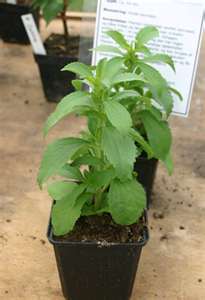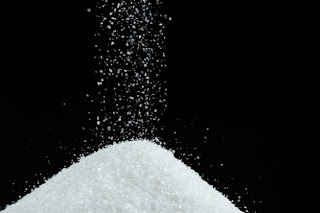Do you have a sweet tooth you can't tame? Dr. Diane's scientific data confirms that I think it's a part of my DNA.
My dad sold feed to other farmers. The feed companies would send us wonderful treats each Christmas such as crates of oranges or grapefruit. Both were a luxury up north. Those were good, but my true interest was the boxes of candy dad received.
We had a routine: Dad would open one box (and store the rest some unknown place) and place it in the top drawer of his dresser. The boxes of candy always had two layers. Dad rationed out a piece of candy on his whim and that whim was not consistent with my desire for more. I'd sneak into the bedroom and quietly lift the first layer of candy and take a piece from below. I thought I was incredibly smart to take pieces he couldn't see. And yes, obviously when he was done with the first layer and lifted the little white cardboard, he had to figure out my scheme. I never thought that far ahead (typical kid logic) and he never called me on it. Dad had a sense of humor and his own sweet tooth; I'm guessing he got a laugh out of it each time.
Back to sweets: I tried something last year; I planted "Stevia rebaudiana". Stevia is in the sunflower family. It's grown (and sold) for it's sweet leaves. The leaves of the stevia plant have 30–45 times the sweetness of table sugar. The leaves can be eaten fresh, or put in teas and foods.
It's been used for decades in many countries as a sweetener. Not without controversy, the extract was banned in the U.S. in the 1990s and now must be labeled a dietary supplement. The extract has 300 times the sweetness of sugar. It has been a sugar substitute for people wanting to limit their carbs. or watching their blood glucose.
Beverage companies are using sweeteners enhanced with stevia in soft drinks. Some of the names you may see on a can are: "Purevia", "rebiana", "steviol glycosides", "Truvia", and "Rebaudioside A". Interesting that along with the sweet drink industry, Cargill is involved in developing this product. Part of the process for extracting the sweetener used in soft drinks typically involves the use of ethanol or methanol as the solvent.
Once stevia extracts and components hit the US market, testing started and with mixed results. Is it toxic? Does it have adverse components? Does it cause birth defects? Right now, none of these are proven to happen because of stevia or it's components.
It's been shown to improve insulin sensitivity on animals and the hope of reversing diabetes. "In addition, a 2009 FDA review study found that stevioside and related compounds have anti- hyperglycemic, anti-hypertensive, anti-inflammatory, anti-tumor, anti-diarrheal, diuretic and immunomodulatory actions."
Politically, it's been a bit of a hotbed of complaints, industry and legal maneuvering, and laboratory findings since it cannot be patented. Leave it to large industry and the government to take a good thing and crush the sweetness right out of it! www.stevia.net has some interesting research.
My dad sold feed to other farmers. The feed companies would send us wonderful treats each Christmas such as crates of oranges or grapefruit. Both were a luxury up north. Those were good, but my true interest was the boxes of candy dad received.
We had a routine: Dad would open one box (and store the rest some unknown place) and place it in the top drawer of his dresser. The boxes of candy always had two layers. Dad rationed out a piece of candy on his whim and that whim was not consistent with my desire for more. I'd sneak into the bedroom and quietly lift the first layer of candy and take a piece from below. I thought I was incredibly smart to take pieces he couldn't see. And yes, obviously when he was done with the first layer and lifted the little white cardboard, he had to figure out my scheme. I never thought that far ahead (typical kid logic) and he never called me on it. Dad had a sense of humor and his own sweet tooth; I'm guessing he got a laugh out of it each time.
Back to sweets: I tried something last year; I planted "Stevia rebaudiana". Stevia is in the sunflower family. It's grown (and sold) for it's sweet leaves. The leaves of the stevia plant have 30–45 times the sweetness of table sugar. The leaves can be eaten fresh, or put in teas and foods.
It's been used for decades in many countries as a sweetener. Not without controversy, the extract was banned in the U.S. in the 1990s and now must be labeled a dietary supplement. The extract has 300 times the sweetness of sugar. It has been a sugar substitute for people wanting to limit their carbs. or watching their blood glucose.
Beverage companies are using sweeteners enhanced with stevia in soft drinks. Some of the names you may see on a can are: "Purevia", "rebiana", "steviol glycosides", "Truvia", and "Rebaudioside A". Interesting that along with the sweet drink industry, Cargill is involved in developing this product. Part of the process for extracting the sweetener used in soft drinks typically involves the use of ethanol or methanol as the solvent.
Once stevia extracts and components hit the US market, testing started and with mixed results. Is it toxic? Does it have adverse components? Does it cause birth defects? Right now, none of these are proven to happen because of stevia or it's components.
It's been shown to improve insulin sensitivity on animals and the hope of reversing diabetes. "In addition, a 2009 FDA review study found that stevioside and related compounds have anti- hyperglycemic, anti-hypertensive, anti-inflammatory, anti-tumor, anti-diarrheal, diuretic and immunomodulatory actions."
Politically, it's been a bit of a hotbed of complaints, industry and legal maneuvering, and laboratory findings since it cannot be patented. Leave it to large industry and the government to take a good thing and crush the sweetness right out of it! www.stevia.net has some interesting research.
~~~~~~~~~~~~~~~~~~~~~~~
What does the gardener need to know?
You may find plant sets available at nurseries in your area (this is where I purchased mine). I've seen it in catalogs and on the web. Planting from seed requires more patience than most home gardeners have because of a low seed germination rate and varying sweetness of plants.
I planted mine in a pot and it was easy to grow with no extreme measures for care. It's not a particularly outstanding plant visually - medium green leaves on stiff stems that can look like a shrub.
In this area, it would be considered an annual or plant in a pot. Typically it has a one year life cycle. It makes an excellent herb for those wishing to have an organic sweetener (assuming you do not use chemicals in your own environment).
Don't put outside until all danger of frost is over and ground temperatures are 50-60 degrees. Plant in rich loamy, well drained soil, mulch to keep surface roots from drying, and fertilize with a low nitrogen organic based brand.
Harvesting is not a summer long process, rather wait as late in the fall prior to a frost and cut the branches down, strip the leaves, and dry the leaves. Crush dried leaves if using as a tea or powder to use in recipes.
Chewed fresh leaves have a sweet licorice taste and long after taste.
Using stevia requires some trial and error because your plant will have it's own sweetness level. The leaves can be made into a liquid that may help you measure into drinks. There's a conversion chart on the stevia web site.
My little bit of advice: Don't use too much at a time - although I can't imagine anyone able to tolerate large amounts in one bite or drink. As with all natural supplements, use wisely.
All photos are from the open web.





Great post! This is very useful. Thank you for sharing. Your tip on how to set up your is very informative and couldn't have come at a better time. I am always on the lookout for more info on setting plants in my backyard. Hop to see more of your posts soon.
ReplyDeleteDavid Wofford
Just click here for plants that attract butterflies
Thank you, David, for your kind comments. Enjoyed your butterfly pages, too. I'm looking forward to our fluttering friends this spring! Diane
ReplyDelete